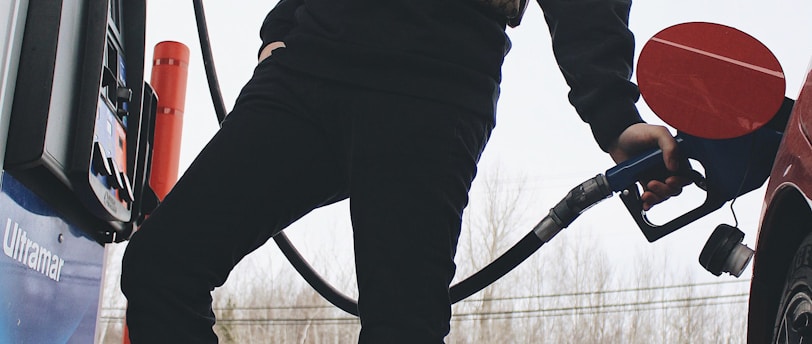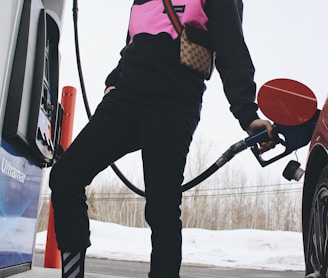Trouser Manufacturing Guide
In this guide, we will take you through the process of manufacturing trousers, from sourcing fabric to sewing the final product.
GARMENTS MANUFACTURING GUIDE


If you are planning to start a trouser manufacturing business, you need to know how to make trousers from scratch. In this guide, we will take you through the process of manufacturing trousers, from sourcing fabric to sewing the final product.
Introduction
Before diving into the manufacturing process, it is essential to understand the different types of trousers available in the market, the materials used to make them, and the different styles and cuts.
Types of Trousers
There are several types of trousers, including dress pants, chinos, jeans, cargo pants, sweatpants, and leggings. Each type requires specific materials, stitching techniques, and design elements.
Dress Pants
Dress pants are usually made from wool, cotton, or synthetic materials. They are typically straight or tapered and have a crease down the front.
Chinos
Chinos are casual trousers made from cotton twill. They are lightweight, comfortable, and come in various colors.
Jeans
Jeans are a popular type of trousers made from denim fabric. They are usually cut in a straight or slim-fit style.
Cargo Pants
Cargo pants are durable and practical trousers, usually made from cotton. They have several pockets and are ideal for outdoor activities.
Sweatpants
Sweatpants are comfortable and casual trousers, usually made from cotton or fleece. They are perfect for lounging around the house or exercising.
Leggings
Leggings are tight-fitting trousers usually made from stretchy fabric. They are popular with women and come in various colors and designs.
Materials
The materials used to make trousers vary depending on the type of trouser being manufactured. However, the most commonly used fabrics include cotton, wool, denim, and synthetic materials like polyester.
Cotton
Cotton is a natural fabric that is breathable and comfortable to wear. It is commonly used in the manufacturing of chinos, dress pants, and sweatpants.
Wool
Wool is a durable fabric that provides warmth and is ideal for dress pants and formal trousers.
Denim
Denim is a sturdy and durable fabric used in the manufacturing of jeans. It is available in different weights and shades.
Synthetic Materials
Synthetic materials like polyester are durable, lightweight, and easy to care for. They are often used in the manufacturing of athletic wear, leggings, and cargo pants.
Manufacturing Process
The manufacturing process for trousers involves several steps, including cutting, stitching, and finishing. Here is a step-by-step guide to the manufacturing process.
Step 1: Pattern Making
The first step in the manufacturing process is pattern making. A pattern is a template that outlines the shape and size of the trouser. The pattern is created based on the design and measurements of the trouser.
Step 2: Cutting
After the pattern has been created, the fabric is cut according to the pattern. This step requires precision to ensure that the pieces are cut accurately.
Step 3: Stitching
Once the fabric pieces have been cut, they are sewn together using a sewing machine. The stitching process requires skill and precision to ensure that the trouser is well-made and durable.
Step 4: Finishing
After the trousers have been stitched together, they go through the finishing process. This involves ironing, hemming, and adding any finishing touches like buttons or zippers.
Quality Control
Quality control is essential in the trouser manufacturing process to ensure that the final product meets the required standards. The quality control process involves inspecting the fabric, checking the stitching, and ensuring that the final product is free from defects.
Conclusion
The process of manufacturing trousers requires skill, precision, and attention to detail. By understanding the different types of trousers, materials used, and manufacturing processes, you can create high-quality trousers that meet the needs of your customers. Whether you are manufacturing dress pants, chinos, jeans, or leggings, the key to success is to pay attention to the details and ensure that the final product is well-made.
FAQs
What are the most commonly used materials in trouser manufacturing?
The most commonly used materials in trouser manufacturing include cotton, wool, denim, and synthetic materials like polyester.
How do you ensure quality control in trouser manufacturing?
Quality control in trouser manufacturing involves inspecting the fabric, checking the stitching, and ensuring that the final product is free from defects.
What is the difference between dress pants and chinos?
Dress pants are typically made from wool, cotton, or synthetic materials, while chinos are made from cotton twill. Dress pants are usually straight or tapered and have a crease down the front, while chinos are more casual and come in various colors.
What types of trousers are ideal for outdoor activities?
Cargo pants are ideal for outdoor activities because they are durable and have several pockets.
What is the most popular type of trousers for women?
Leggings are the most popular type of trousers for women because they are comfortable and come in various colors and designs.
